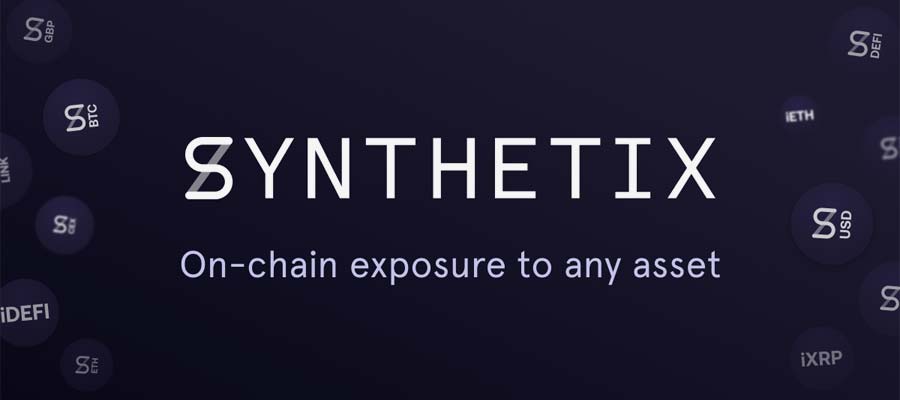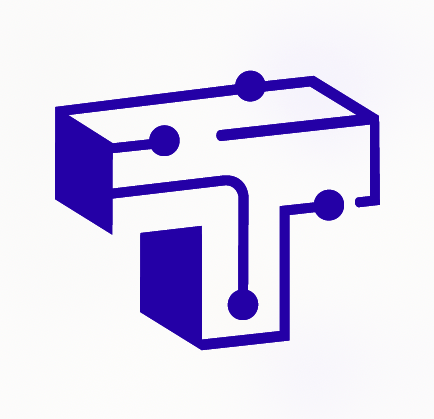
The main purpose of the following artical is to clarify the mechanism of how synthetix works, understand how synthetix ecology reflect value and looks into how synthetix might be in the future.
Author: Taihe researcher Calvin
Overview:
Overview:
Synthetix is a project that makes synthetic assets on the Ethereum chain. It is very different from other Wrapped synthetic assets in terms of implementation logic. The "S asset" synthesized on Synthetix does not need to pledge the underlying assets. The "S asset" is directly based on the oracle. Quotes are generated on-chain.
Synthetix's "soft anchor" synthetic asset method can open up the traditional financial market and the digital currency market, laying the foundation for the prosperity of the ecology.
Synthetix can solve more current problems on the Ethereum chain and enrich the current DeFi ecosystem.
"Out of nothing" synthesis mechanism
In the Synthetix system, the risk exposure of generating synthetic assets (“S assets”) does not require the platform to hold the underlying assets, but all people obtain sUSD by staking SNX, and use the sUSD you get to buy any synthetic assets on Synthetix Exchange assets ("S assets"), while S assets are directly generated on the chain, and the price is determined by a real-time oracle machine, not by market buying and selling. This mechanism allows Synthetix to have no slippage when trading large amounts, and You can trade bulk, foreign exchange and stocks in traditional financial markets.
So the key question is what is the inner principle behind Synthetix's realization of synthetic assets? And how to ensure the continuous operation of this system?
This is to mention a very important concept in the Synthetix system, the "debt pool", which allows all sUSD holders to form a debt pool, stripping off the platform's own risks, and there will be no liquidation mechanism.
When users mortgage SNX to Synthetix in exchange for sUSD, what they actually get is to pledge SNX to obtain a certain amount of USD standard debt. This debt does not charge any interest, but this debt floats with the sum of the debts of all "debtors". This is The concept of a "debt pool".
In order to clearly introduce how the debt pool works and how the debt itself "floats", let's give an example, which is also taken from the Synthetix white paper.
Step 1: Both Medio and Yan start with $50k sUSD. This adds up to a total network debt of $100,000, of which Medio and Yan are responsible for 50% each.
Step 2: Medio buys sBTC with his $50k, while Yan continues to hold sUSD.
Step 3: The price of BTC increases by +50%, which means Medio's BTC is now worth $75k. The $25k profit increases the total network debt to $125k.
Step 4: Medio and Yan are still responsible for 50% of the network's total debt, which now corresponds to $62.5k each of them owed.
When Medio's sBTC value position nets his debt, it makes a profit of $125,000. Even if the value of Yan's position remains unchanged at $50k, the debt he owes increases by $12.5k, resulting in a $12.5k equivalent loss.
*The picture above shows that our experimental account has 20.65sUSDT, and the actual debt we bear is 24.24.
You can say that Synthetix is a zero-sum game. The money earned by traders of "S assets" is not created out of thin air, but needs to be shared by all S asset holders. This design will be difficult to understand at first, but if you understand it carefully, you will find that there is a The emergence of the concept of "debt" under a distributed logical framework.
Synthetix is a zero-sum game because if all "S assets" are only circulated within Synthetix, it is indeed a zero-sum system, but if "S assets" can already circulate in the entire DeFi market (such as now), then the Synthetix system will Beginning to link with external systems, SNX holders actually become issuers of "S assets", and the entire debt pool will "gamble" with all those who want to interact with the pool (for example, DeFi needs to purchase sETH\sBTC\sBNB, etc.).
*Everyone is willing to believe in S-assets, because any s-assets can be exchanged for equivalent sUSD directly according to the quotation of the oracle machine in the Synthetix system
A prosperous ecology is taking shape
Synthetix synthetic assets are linked to real asset prices, so that a variety of traditional assets can be synthesized on the chain. For example, sSP500 is linked to the S&P 500 stock index, and sXAU is linked to gold. By anchoring real assets, synthetic assets simulate the price of real assets , to facilitate people to conduct transactions directly on the blockchain.
Only the soft anchoring method of price anchoring to form "synthetic assets" makes the Synthetix ecology not only cross-chain asset aggregation, out-of-circle, financial derivatives and other applications have many meanings.
The anchoring here is a kind of soft anchoring. Users cannot exchange sXAU for physical gold, nor can they exchange sSP500 for a real stock index. In essence, synthetic assets are just price anchors.
Synthetix currently has three major product lines, namely:
Mintr: The main user is the minting and burning of synthetic assets, which is the interactive bridge between "S assets" and SNX tokens
*Synthetix Mintr: SNX holders can perform various operations on this platform, including minting and burning SNX, managing mortgage ratios, staking SNX, etc.
Synthetix.exchange: Decentralized exchange, mainly used for trading synthetic assets.
Cryptocurrencies such as sBTC, sETH, etc.;
Inverse cryptocurrencies such as iBTC, iETH. Taking iBTC as an example, when the price of BTC falls, the price of iBTC will rise.
In addition to this, Synthetix has also built a derivatives trading platform based on its own protocol, Kwenta, a foreign exchange, commodity, cryptocurrency and index platform:
1. Legal currency, such as sUSD, sEUR, etc.;
2. Commodities, such as synthetic gold and synthetic silver, are measured in ounces
token economy
token economy
A good economic model is to motivate the participants in the ecology, and to allow its own ecological growth to empower the platform token. Compared with other platforms that only use profit-making buybacks or governance tokens, Synthetix is in the design of the economic model SNX matters.
Synthetix's economic model is also an incremental model of incremental reduction, and the incremental SNX is used to reward SNX holders to lock up their positions.
SNX token holders can provide liquidity for the platform by mortgaging tokens, and obtain mining rewards and transaction fee dividends. Specifically, the user's operation must pledge SNX tokens and mint sUSD (the US dollar stable currency dedicated to the platform) to provide transaction depth for the platform, and participants can obtain mining rewards (SNX) and transaction fee dividends.
The development of ecology will forcibly feed back the platform token SNX. There are two requirements for you to obtain rewards and redeem assets. The first step is to repay the debt, and the second step is that the pledge rate must return to 500% (the current pledge requirement is 500%). This mode is essentially the protection of the token price. When the price of SNX falls, the value of your synthesized sUSD remains unchanged, but the price of SNX falls will cause the pledge rate to be lower than 500%. In order to obtain rewards and redeem the principal, you must To buy SNX and make the pledge rate meet the 500% requirement again, the assets can be redeemed. The model clearly emphasizes the ecological feedback mechanism.
looking to the future
looking to the future
1. More S assets
Since synthetix is a soft anchor method to realize asset on-chain transactions, this mechanism is very suitable for adding more traditional financial assets, and even some innovative gameplay assets (for example, US stock ETF), such as S&P500 index and such as APPL And stocks like TSLA.
The significance of doing so will be great, making Synthetix a bridge between the encrypted world and the traditional financial market, and expanding the threshold for people in the world to access the financial market. For example, a retail trader in Indonesia can trade without using the S&P 500 Trade with an index.
In addition, due to the way of price anchoring, assets can also be leveraged to generate leveraged assets.
2. The composability of S assets makes decentralized asset management possible
Think about a question first, if you want to do a decentralized fund project in the current ETH ecosystem, what would you do?
You want to be long UNI, short BNB, and by the way, XRP. These assets are not on the ETH chain, but the ownership on the chain must be owned by the user, so that the chain can be checked and the fund operation is transparent.
I just thought about this problem. At that time, a friend wanted to build such an application market, so that everyone can issue their own recognized index or asset portfolio. Under sufficient market competition, a very interesting and efficient asset portfolio will definitely be produced. .
But the first step in doing this is to make synthetic assets, and move the price of any asset to the chain. Synthetix solves it perfectly.
Now on-chain asset management, there are only "machine gun pools" and "liquidity" mining. What Synthetix does makes decentralized asset management possible.
It has really landed and is ready to use. dHedge under Synthetix is doing this.
3. More advanced order types
The current version of Synthetix.Exchange only supports market orders, which limits the usability of the exchange. The advanced order engine will be able to support advanced order types such as limit price, stop loss, stop limit and even iceberg order. Synthetix will use the relay network to process advanced orders. To achieve the same functions as centralized exchanges, advanced order types are very critical.
Summarize
Summarize
Synthetix synthetic assets have greatly broadened the current boundaries of DeFi and enriched the application scenarios of DeFi, providing fertile soil for the next prosperity of the DeFi ecology, and even become a key window for encrypted finance to traditional finance.
The immature DeFi internal circulation urgently needs to be grafted with traditional financial products. The logic of Synthetix synthetic assets makes it possible to invest in foreign exchange, various stocks, stock indexes, put/call options, futures, and even insurance on the chain.
As financial Lego building blocks, the infinite permutations and combinations between DeFi continue to enrich this ecology. Synthetix virtual synthetic assets, as a bridge for transactions, will further accelerate the pace of DeFi development in 2021, and look forward to more innovations.



